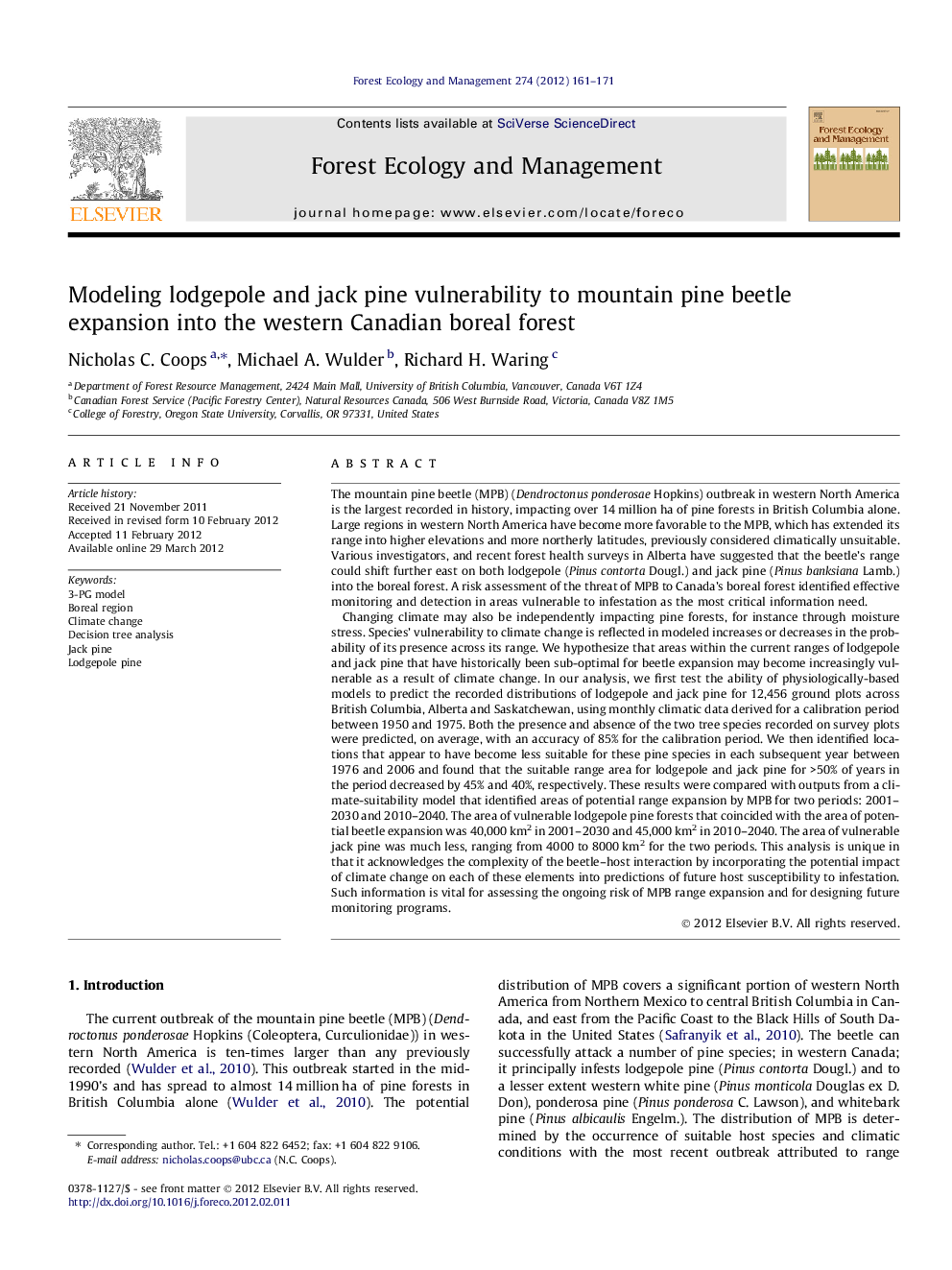| کد مقاله | کد نشریه | سال انتشار | مقاله انگلیسی | نسخه تمام متن |
|---|---|---|---|---|
| 87181 | 159236 | 2012 | 11 صفحه PDF | دانلود رایگان |

The mountain pine beetle (MPB) (Dendroctonus ponderosae Hopkins) outbreak in western North America is the largest recorded in history, impacting over 14 million ha of pine forests in British Columbia alone. Large regions in western North America have become more favorable to the MPB, which has extended its range into higher elevations and more northerly latitudes, previously considered climatically unsuitable. Various investigators, and recent forest health surveys in Alberta have suggested that the beetle’s range could shift further east on both lodgepole (Pinus contorta Dougl.) and jack pine (Pinus banksiana Lamb.) into the boreal forest. A risk assessment of the threat of MPB to Canada’s boreal forest identified effective monitoring and detection in areas vulnerable to infestation as the most critical information need.Changing climate may also be independently impacting pine forests, for instance through moisture stress. Species’ vulnerability to climate change is reflected in modeled increases or decreases in the probability of its presence across its range. We hypothesize that areas within the current ranges of lodgepole and jack pine that have historically been sub-optimal for beetle expansion may become increasingly vulnerable as a result of climate change. In our analysis, we first test the ability of physiologically-based models to predict the recorded distributions of lodgepole and jack pine for 12,456 ground plots across British Columbia, Alberta and Saskatchewan, using monthly climatic data derived for a calibration period between 1950 and 1975. Both the presence and absence of the two tree species recorded on survey plots were predicted, on average, with an accuracy of 85% for the calibration period. We then identified locations that appear to have become less suitable for these pine species in each subsequent year between 1976 and 2006 and found that the suitable range area for lodgepole and jack pine for >50% of years in the period decreased by 45% and 40%, respectively. These results were compared with outputs from a climate-suitability model that identified areas of potential range expansion by MPB for two periods: 2001–2030 and 2010–2040. The area of vulnerable lodgepole pine forests that coincided with the area of potential beetle expansion was 40,000 km2 in 2001–2030 and 45,000 km2 in 2010–2040. The area of vulnerable jack pine was much less, ranging from 4000 to 8000 km2 for the two periods. This analysis is unique in that it acknowledges the complexity of the beetle–host interaction by incorporating the potential impact of climate change on each of these elements into predictions of future host susceptibility to infestation. Such information is vital for assessing the ongoing risk of MPB range expansion and for designing future monitoring programs.
► We modeled vulnerability of lodgepole and jack pine to changing climate.
► Presence and absence were predicted with an accuracy of 85%.
► Between 1976 and 2006 the suitable range for lodgepole and jack pine decreased by 45% and 40%, respectively.
► The area of vulnerable lodgepole pine forests was 40,000 km2 in 2001–2003 and 45,000 km2 in 2010–2040.
► The area of vulnerable jack pine was much less, ranging from 4000 to 8000 km2 for the two periods.
Journal: Forest Ecology and Management - Volume 274, 15 June 2012, Pages 161–171